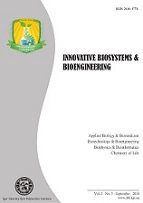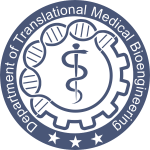Development of Production Technology of Goat's Sour Cream Butter Enriched With Whey Herbal Infusions
DOI:
https://doi.org/10.20535/ibb.2020.4.4.210320Keywords:
Sour cream butter, Goat's milk, Bacterial preparation, Whey infusion, Medicinal herbs, Fatty acidsAbstract
Background. Goat milk differs from cow's milk in terms of higher digestibility, expressive alkalinity, higher buffering capacity and special nutritional properties. Among the wide range of dairy products the leading place is occupied by butter. Research aimed at creating its varieties with moderate calories and high physiological value with attractive organoleptic characteristics that meet the modern concept of healthynutrition is relevant. High-quality butter from goat's milk can be produced only with the use of biotechnological approaches, aiming at enhancing sensorial parameters and increasing the content of fatty acid components.
Objective. We aimed to develop the technology of goat's sour cream butter production.
Methods. The technological stages of making sour cream butter from goat's milk were developed. Determination of physical, chemical and microbiological parameters of the finished product was carried out in accordance with generally accepted techniques.
Results. The developed technology involves fermenting goat's milk sour cream with a bacterial preparation, activated in whey infusions of medicinal herbs. We used the bacterial preparation "KVM-P" containing Lactococcus lactis ssp. lactis biovar. diacetilactis, Streptococcus thermophilus and Lactobacillus delbrueckii ssp. bulgaricus, and made ex tempore whey infusions of medicinal herbs: nettle (Urtіca dіoіca), mint (Mentha aquatica) and amaranth (Amaranthus cruentus). Activation of the bacterial preparation "KVM-P" in the infusion of medicinal herbs has reduced the duration of its dissolution to 20–30 minutes instead of 3–4 hours (as envisaged by traditional technology). Enrichment of butter with the components of herbal whey infusions increased the content of dry milk residue of the product, which led to increase in butter yield from every 100 kg of cream up to 0.8 kg. Produced products were analyzed by acid number of fatty phase, content of low molecular weight fatty acids lactic and lactobacillales count. The content of lactobacilli (CFU/g) in the experimental batches of butter was 1.3–2.5 times higher compared to the control sample. The slightly lower number of microbiota in the experimental batch of butter, produced using an infusion of mint leaves, is due to its bacteriostatic effect on microorganisms. During storage of the experimental batches of butter for 30 days at the temperature of 4 °C, the peroxide value was 0.3 mmol/kg ½ O. In control samples of the product, this rate was 2 mmol/kg ½ O, which indicates the increased resistance of the experimental batches of butter to oxidation of fat during storage. Organoleptic parameters of the experimental samples of butter met the requirements of state standards. The taste and smell of goat’s sour cream butter were weak.
Conclusions. We developed technology of production of sour cream butter from goat's milk which is based on the use of activated bacterial preparation of herbal whey infusions. This technology significantly reduces the taste and smell of goat fat and prolongs the shelf life.References
Nazarenko YuV, Treytyak YuA, Ivashchenko AS. The use of goat milk in the diet of modern humans. Scientific Notes of the V. I. Vernadsky Tavrichesky National University. Series: Technical Sciences. 2018;29(68)(6(2):116-23.
Pal M, Dudhrejiya TP, Pinto S, Brahamani D, Vijayageetha V, Reddy YK, et al. Goat milk products and their significance. Beverage & Food World. 2017;44(7):21-5.
Najgebauer-Lejko D, Grega T, Sady M, Domagała J. The quality and storage stability of butter made from sour cream with addition of dried sage and rosemary. Biotechnology in Animal Husbandry. 2009;25(5-6):753-61.
Alenisan MA, Alqattan HH, Tolbah LS, Shori AB. Antioxidant properties of dairy products fortified with natural additives: A review. Journal of the Association of Arab Universities for Basic and Applied Sciences. 2017;24(1):101-6. DOI: 10.1016/j.jaubas.2017.05.001
Yurchenko S, Sats A, Tatar V, Kaart T, Mootse H, Jõudu I. Fatty acid profile of milk from Saanen and Swedish Landrace goats. Food Chemistry. 2018;254:326-32. DOI: 10.1016/j.foodchem.2018.02.041
Ryzhkova TM, Kolomytova VO, Bondarenko TA. Assessment of the biological value of butter from goat milk. Progressive Equipment and Technologies of Food Production in the Restaurant Industry and Trade. 2011;(2(14):376-81.
Naumova NL. The antioxidant properties of NovaSOL Rosemary food additive by the example of butter. Bulletin of the Altai State Agrarian University. 2015;(3(125):152-6.
Asresie A, Seifu E, Kurtu MY. Churning efficiency and microbial quality of butter made from camel milk alone and blending it with goat milk. Net Journal of Agricultural Science. 2013;1(3):75-80.
Pawar N, Gandhi K, Purohit A, Arora S, Singh RRB. Effect of added herb extracts on oxidative stability of ghee (butter oil) during accelerated oxidation condition. Journal of Food Science and Technology. 2014;51(10):2727-33. DOI: 10.1007/s13197-012-0781-1
Gudkov AV. Cheesemaking: Technological, Biological, and Physicochemical Aspects. Moscow: DeLi Print, 2004, 804 p.
Bodnarchuk O, Maiboroda Y, Yeresko G, Kigel N. Some technological aspects of sour cream production. Food Resources. Series: Technical sciences. 2014;2(3):68-72.
DT-2: Lesson 17. Composition and classification of butter. Ecoursesonline.iasri.res.in.
Deosarkar SS, Khedkar CD, Kalyankar SD, Sarode AR. Cream: Types of Cream. In: Encyclopedia of Food and Health. London: Elsevier, 2016, pp. 331-7. DOI: 10.1016/B978-0-12-384947-2.00205-1
BahramParvar M, Tehrani MM, Razavi SMA, Koocheki A. Application of simplex-centroid mixture design to optimize stabilizer combinations for ice cream manufacture. Journal of Food Science and Technology. 2015;52(3):1480-8. DOI: 10.1007/s13197-013-1133-5
Butter Product Technology. Agroscope.admin.ch. Available from: https://www.agroscope.admin.ch/agroscope/en/home/topics/food/quality/kaese-milch-milchprodukte/milchfett-rahm-butter/ technologie-der-butterprodukte.html.
Seitz EW, Sandine WE, Elliker PR, Day EA. Distribution of Diacetyl Reductase among Bacteria. Journal of Dairy Science. 1963;46(3):186-9. DOI: 10.3168/jds.S0022-0302(63)89004-9
Park YW. Goat Milk – Chemistry and Nutrition. In: Handbook of Milk of Non‐Bovine Mammals, 2nd ed. Hoboken, New Jersey: Wiley, 2017, pp. 42-83. DOI: 10.1002/9781119110316.ch2.2
Bodnarchuk OV, Yeresko GO, Kigel NF. Method of obtaining bacterial preparation of direct introduction of "KVM-P" for sour cream oil. Patent of Ukraine UA109326C2, published 10.08.2015.
Buldo P, Kirkensgaard JJK, Wiking L. Crystallization mechanisms in cream during ripening and initial butter churning. Journal of Dairy Science. 2013;96(11):6782-91. DOI: 10.3168/jds.2012-6066
Ozkan G, Simsek B, Kuleasan H. Antioxidant activities of Satureja cilicica essential oil in butter and in vitro. Journal of Food Engineering. 2007;79(4):1391-6. DOI: 10.1016/j.jfoodeng.2006.04.020
Kulakova SN, Pozdniakov AL, Korf II, Karagodina ZV, Medvedev FA, Viktorova EV, et al. [Amaranths oil: peculiarities of chemical composition and influence on lipid metabolism by rats]. Voprosy Pitaniia. 2006;75(3):36-42.
Martins N, Barros L, Santos-Buelga C, Silva S, Henriques M, Ferreira ICFR. Decoction, infusion and hydroalcoholic extract of cultivated thyme: Antioxidant and antibacterial activities, and phenolic characterisation. Food Chemistry. 2015;167:131-7. DOI: 10.1016/j.foodchem.2014.06.094
Bodnarchuk OV. Research on the quality of sour cream and sweet cream butter during storage. Scientific Messenger of the S. Z. Gzhytsky Lviv National University of Veterinary Medicine and Biotechnology. Series: Food technologies. 2014;16(3(60):11-20.
Martirosyan DM, Miroshnichenko LA, Kulakova SN, Pogojeva AV, Zoloedov VI. Amaranth oil application for coronary heart disease and hypertension. Lipids in Health and Disease. 2007;6:1. DOI: 10.1186/1476-511X-6-1
Turchyn I, Slyvka N, Mykhailytska O. The use of wasabi in the technology of snack butter. In: Materials of the 80th International Scientific Conference of Young Scientists, Postgraduate Students and Students "Scientific Achievements of Youth - Solving the Problems of Human Nutrition in the 21st Century", part 1. Kyiv, Ukraine; 2014, pp. 495-6. Available from: http://dspace.nuft.edu.ua/jspui/handle/123456789/16209.
Downloads
Published
How to Cite
Issue
Section
License
Copyright (c) 2020 The Author(s)

This work is licensed under a Creative Commons Attribution 4.0 International License.
The ownership of copyright remains with the Authors.
Authors may use their own material in other publications provided that the Journal is acknowledged as the original place of publication and National Technical University of Ukraine “Igor Sikorsky Kyiv Polytechnic Institute” as the Publisher.
Authors are reminded that it is their responsibility to comply with copyright laws. It is essential to ensure that no part of the text or illustrations have appeared or are due to appear in other publications, without prior permission from the copyright holder.
IBB articles are published under Creative Commons licence:- Authors retain copyright and grant the journal right of first publication with the work simultaneously licensed under CC BY 4.0 that allows others to share the work with an acknowledgement of the work's authorship and initial publication in this journal.
- Authors are able to enter into separate, additional contractual arrangements for the non-exclusive distribution of the journal's published version of the work (e.g., post it to an institutional repository or publish it in a book), with an acknowledgement of its initial publication in this journal.
- Authors are permitted and encouraged to post their work online (e.g., in institutional repositories or on their website) prior to and during the submission process, as it can lead to productive exchanges, as well as earlier and greater citation of published work.









